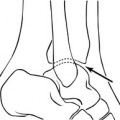Chapter 13 Brain
Methods of imaging the brain
Imaging the brain’s structure and examining its physiology, both in the acute and elective setting, is now the domain of multiplanar, computer-assisted imaging. The imaging modalities in use today include the following:
COMPUTED TOMOGRAPHY OF THE BRAIN
Indications
Technique
Magnetic Resonance Imaging of the Brain
Indications
MRI is indicated in all cases of suspected intracranial pathology. Techniques in use change with the development of new sequences and higher field strength magnets. The techniques described below are, therefore, only basic indications as to sequences in use. The greatest advantages in the use of MRI are the improved contrast resolution between grey and white matter, brain and cerebrospinal fluid (CSF); the removal of artifact due to bone close to the skull base and in the posterior fossa; and in obtaining multiplanar images for lesion localization.
Technique
IMAGING OF INTRACRANIAL HAEMORRHAGE
COMPUTED TOMOGRAPHY
A conventional study consists of 3-mm sections through the brainstem and posterior fossa, and 7-mm sections through the cerebrum. This is the basic multi-detector CT protocol for brain imaging. This is done without contrast to avoid diagnostic difficulty in deciding whether a parenchymal lesion is due to enhancement or blood. Acute blood is typically hyperdense on CT. An exhaustive differential diagnosis for bleeding in different compartments of the brain can be sourced elsewhere but in general bleeding can be extra-axial (i.e. epidural, subdural, subarachnoid, intraventricular) or intra-axial. Intra-axial bleeding can be due to head trauma, ruptured aneurysms or arteriovenous malformations, bleeding tumours (either primary disease or secondaries), hypertensive haemorrhages (cortical or striatal) or haemorrhagic transformation of venous or arterial infarcts. In the assessment of subarachnoid haemorrhage and ischaemic stroke CTA is becoming increasingly used as the screening modality for deciding further intervention. Neurosurgeons are increasingly using CTA alone as the modality for planning microsurgical clipping, especially in the cases where a haematoma exerting mass effect needs to be evacuated immediately adjacent to a freshly ruptured intracranial aneurysm. In ischaemic stroke CTA can localize an acute embolus and CT perfusion imaging can demonstrate the ischaemic core (irreversibly damaged brain) by calculating the relative cerebral blood volume and the ischaemic penumbra (recoverable brain parenchyma) by evaluating the relative cerebral blood flow (rCBF).
Wada R., Aviv R.I., Fox A.J., et al. CT angiography ‘spot sign’ predicts hematoma expansion in acute intracerebral hemorrhage. Stroke. 2007;38(4):1257-1262.
Westerlaan H.E., Gravendeel J., Fiore D., et al. Multislice CT angiography in the selection of patients with ruptured intracranial aneurysms suitable for clipping or coiling. Neuroradiology. 2007;49(12):997-1007.
Imaging of Gliomas
This is an all-encompassing term for a diverse group of primary brain tumours. This includes astrocytomas, oligodendrogliomas, choroid plexus tumours and ependymomas amongst others. The most commonly presenting tumour, however, is the WHO Grade IV astrocytoma or glioblastoma multiforme. Other brain tumours are derived from neuronal cell lines, mixed glial-neuronal cell lines, the pineal gland and embryonal cell lines, peripheral cranial nerves (such as the vestibular schwannoma), meningeal tumours and lymphoma. Appropriate differential diagnoses can be derived from noting the age of the patient, the tumour location (i.e. supra- or infratentorial, cortex or white matter, basal ganglia or brainstem, intra- or extra-axial), its consistency (i.e. cyst formation, mural nodule) and its enhancement characteristics.






